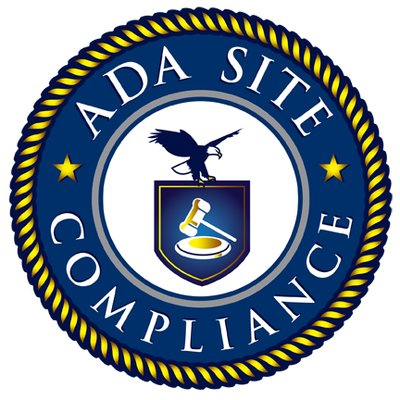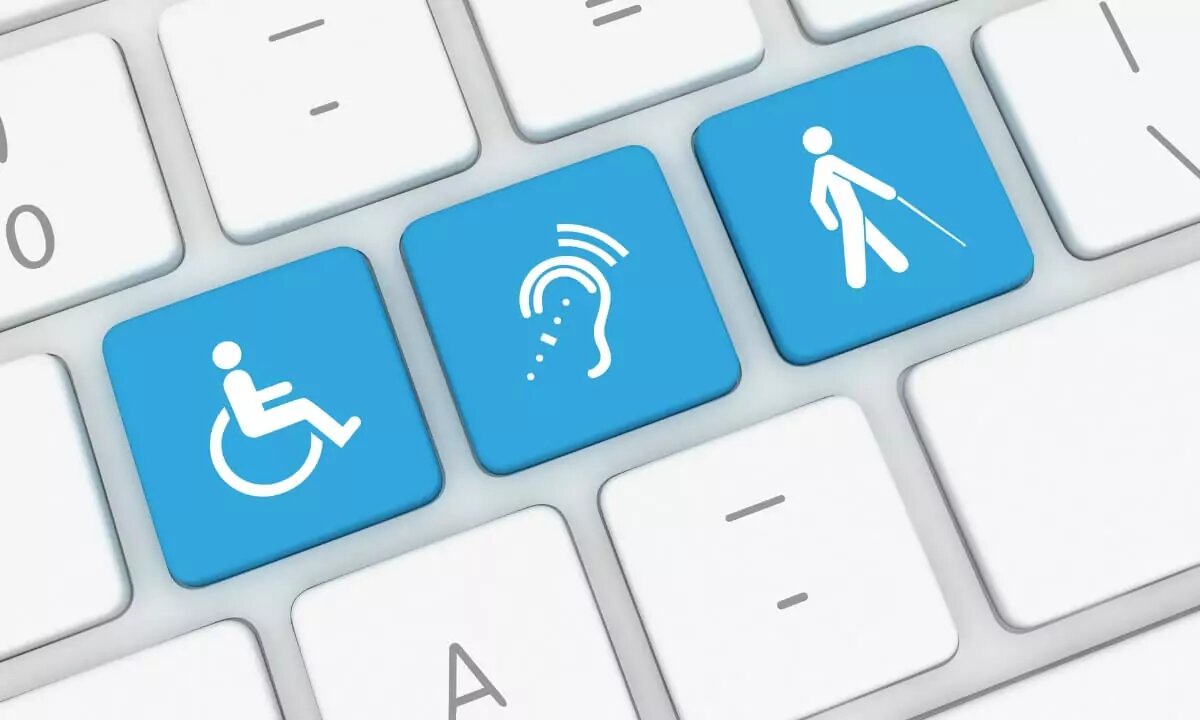Digital Accessibility
 ADA Site Compliance
ADA Site Compliance
Why Accessibility Is A Critical Part Of Diversity Equity And Inclusion
When you think of the term accessibility, it refers to ensuring everyone with all types of abilities can fully engage with your organization. While there may be some rules about accessibility to follow, they are the right thing to do. Accessibility does not relate to only physical accommodations like ramps, automatic doors, and accessible restrooms. With the internet boom and everyone turning online for their information and needs, digital accessibility is also quickly growing. While ensuring digital compliance takes time, resources, and knowledge, we can help you if you want to make your inaccessible website accessible. ADA Site Compliance is the #1 source for all ADA website compliance issues, with an expert team well-versed in all the legal and regulatory requirements for compliance.
What is Digital Accessibility?
Digital accessibility includes designing and developing a digital world for everyone to access. Everyone, whatever their age, ability, or means of access to an inclusive world, should be able to access websites, mobile apps, and any digital experiences. Accessibility is not necessarily a part of the design process. It is when barriers are created, making it difficult for people with impairments to engage and interact as usual, that makes it a requirement.
Why is Digital Accessibility Important in the Company Hiring Practices?
Digital accessibility is essential while hiring because if not, you lose out on connecting with a large part of the population. Digital accessibility lets you provide equal access and opportunity to your customers and potential and existing employees. Besides, the Americans with Disabilities Act (ADA) requires all public accommodations, including websites, to be accessible to people with disabilities. Even Section 508 of the Rehabilitation Act requires that people with impairments be able to access federal agencies’ electronic and information technology (EIT).
Who is a Diversity and Inclusion Manager, and What Do They Do?
A DEI manager oversees a company’s accessibility and diversity efforts and initiatives. They should have a bachelor’s HR degree or a related area specializing in diversity and inclusion. DEI managers should know EEO laws and regulations and have experience planning and managing D&I programs and initiatives. Their myriad job responsibilities include:
Evaluating the company’s current DEI strategy and culture
Advising employees about the best practices for a welcoming work environment
Creating relevant conferences, training programs, and workshops
Investigating concerns on discrimination, sexual orientation, or harassment
Measuring, tracking, and communicating DE&I performance
Building a pipeline of future volunteer leaders
How your Digital Information and Experiences are a Part of DEI Initiatives
Like most organizations and people, your audio, visual, or text content is most likely found on your website. Customers will visit your company or website for information, to make registrations, or buy things. So, they will go elsewhere if they cannot access the information they need. Besides, ensuring your website is accessible is also part of the law, and following the WCAG ensures compliance. Besides, you must ensure your digital information department is accessible to your current and potential employees. Job searchers will likely visit your website looking for potential career opportunities.
Following the best systems for workplace disability inclusion, ranging from hiring to career development, helps. Besides, your existing employees may also want to access your business systems, software, and other tools. Having procurement policies making access selection criteria for vendors, software, and other tools is also helpful. Accessible hiring practices and workplace tools help you recruit and retain talented users with impairments. Studies have proven that companies that hire people with disabilities experience massive improvements in their everyday performances.
3 Ways To Ensure Accessibility Remains a Part of Your DEI Initiatives
Unfortunately, many brands and organizations overlook disability and website access in their DEI initiatives. Besides, some companies promoting diversity and inclusion forget impaired users’ specific needs and experiences. And this is often unintentional in most organizations. The remedy is often nothing complicated, raising awareness and breaking some longstanding disability stigma. These three simple steps go a long way in ensuring access remains an important part of your brand and organization.
- Promoting Awareness
Most of the time, brands and even DEI leaders are unaware of disability and its multiple aspects. This lack of awareness leads to ignorance and limited appreciation of the many challenges users with disabilities face. Creating awareness and understanding of how challenging it is for users with disabilities to navigate the modern digital world settings go a long way toward helping organizations adopt steps to drive accessibility in all work aspects.
- Focus on Accessibility From the Start
Most organizations struggle with compliance mainly because they treat it as an afterthought. Instead of implementing the necessary measures while creating their digital content, they tend to realize they have to add them only after creating their product. This leads to additional time and effort spent on it at an additional cost. It is even more difficult if website access is ignored and only considered an add-on. Instead, focusing on and implementing access-related strategies from the start makes things much easier and less complicated.
- It is More than Visible Diversity
Usually, the visible aspects of diversity that brands emphasize, like race, sexual orientation, and gender, are easily identifiable. As disabilities are relatively less visible, they often end up not receiving the same attention and consideration. Besides, disabilities are not biased based on factors like age, gender, or color and may affect anyone. This is why realizing and setting an appropriate groundwork for broader inclusion focuses for DEI initiatives to work on will prove beneficial.
Getting Started With Accessibility
Things have changed in how people today conduct research, create something, work, and even navigate through life every day. Most of these things are done using the help of digital devices and tools. Digital accessibility is the first place to start for anyone committed to inclusion. And we here at ADA Site Compliance can do just that, helping you in your accessibility effort. Our team of experts practically breathes and lives web compliance.
We start by assessing how accessible and compliant you are today, locating the places needing improvement, and then integrating the necessary strategies through your processes, policies, and cultures. Contact ADA Site Compliance today for all your website compliance needs!
Subscribe to my newsletter
Read articles from ADA Site Compliance directly inside your inbox. Subscribe to the newsletter, and don't miss out.
Written by

ADA Site Compliance
ADA Site Compliance
All websites are required to be accessible by people with disabilities. If they are not, this is a violation of the Americans with Disabilities Act (ADA)!